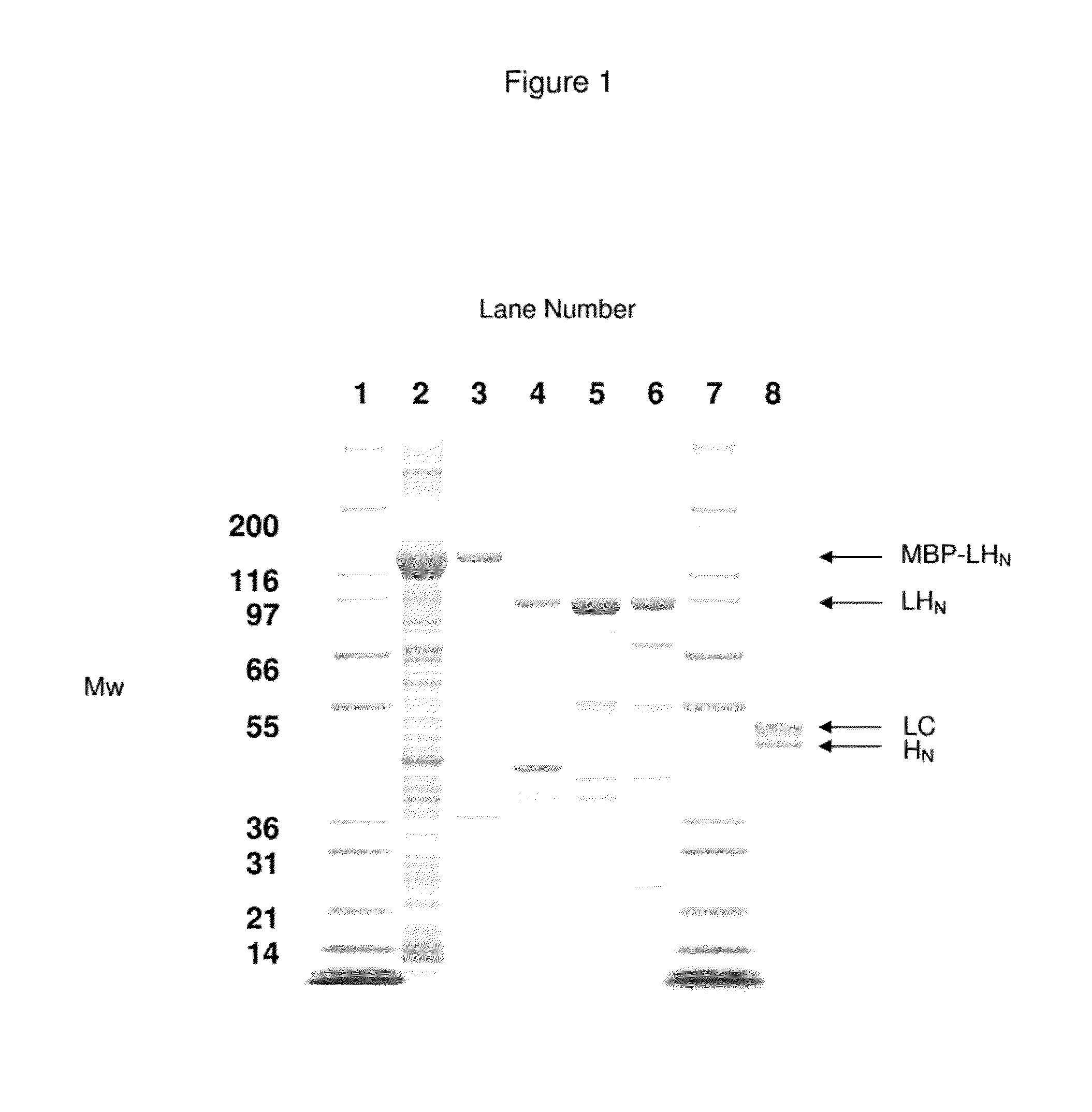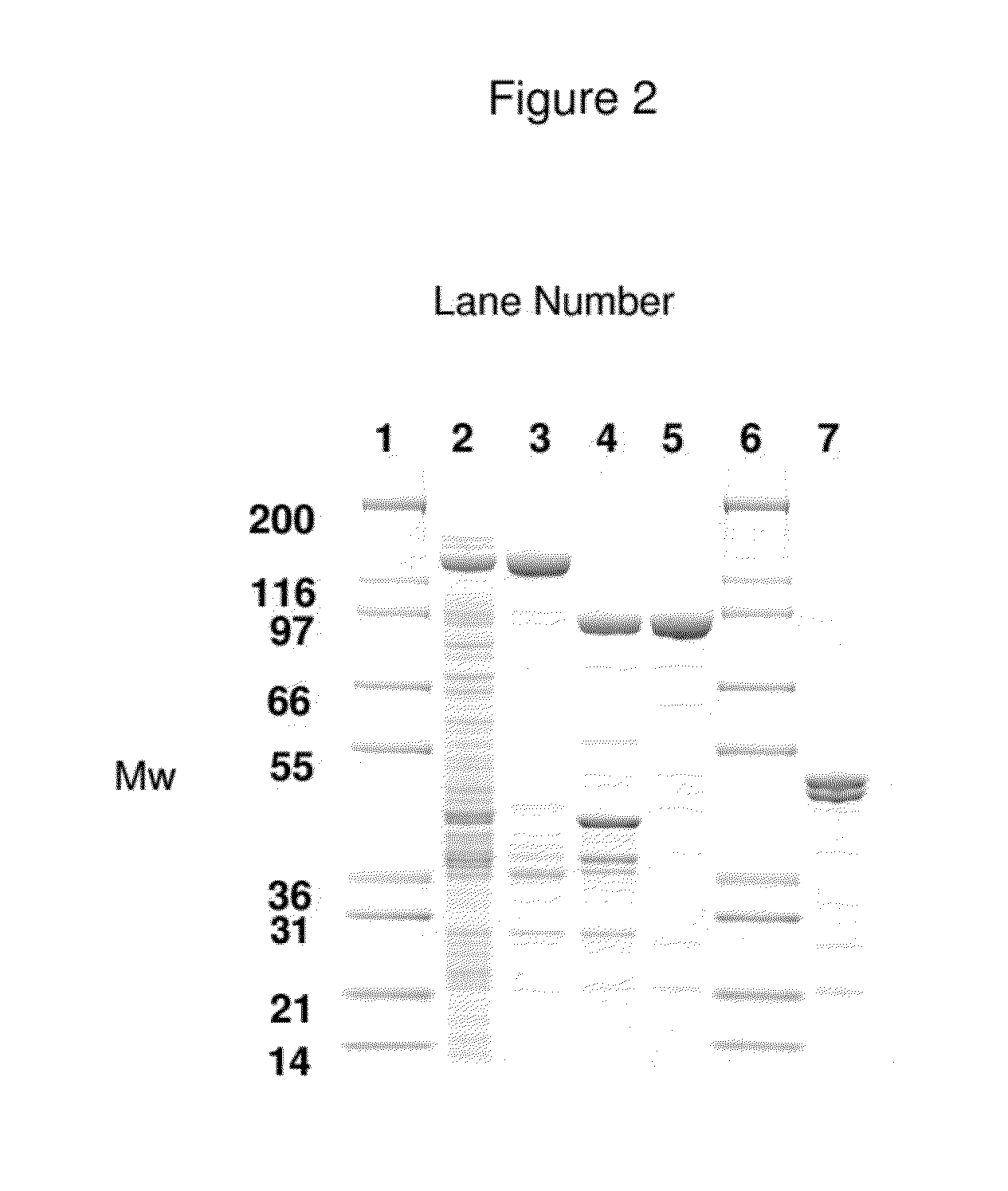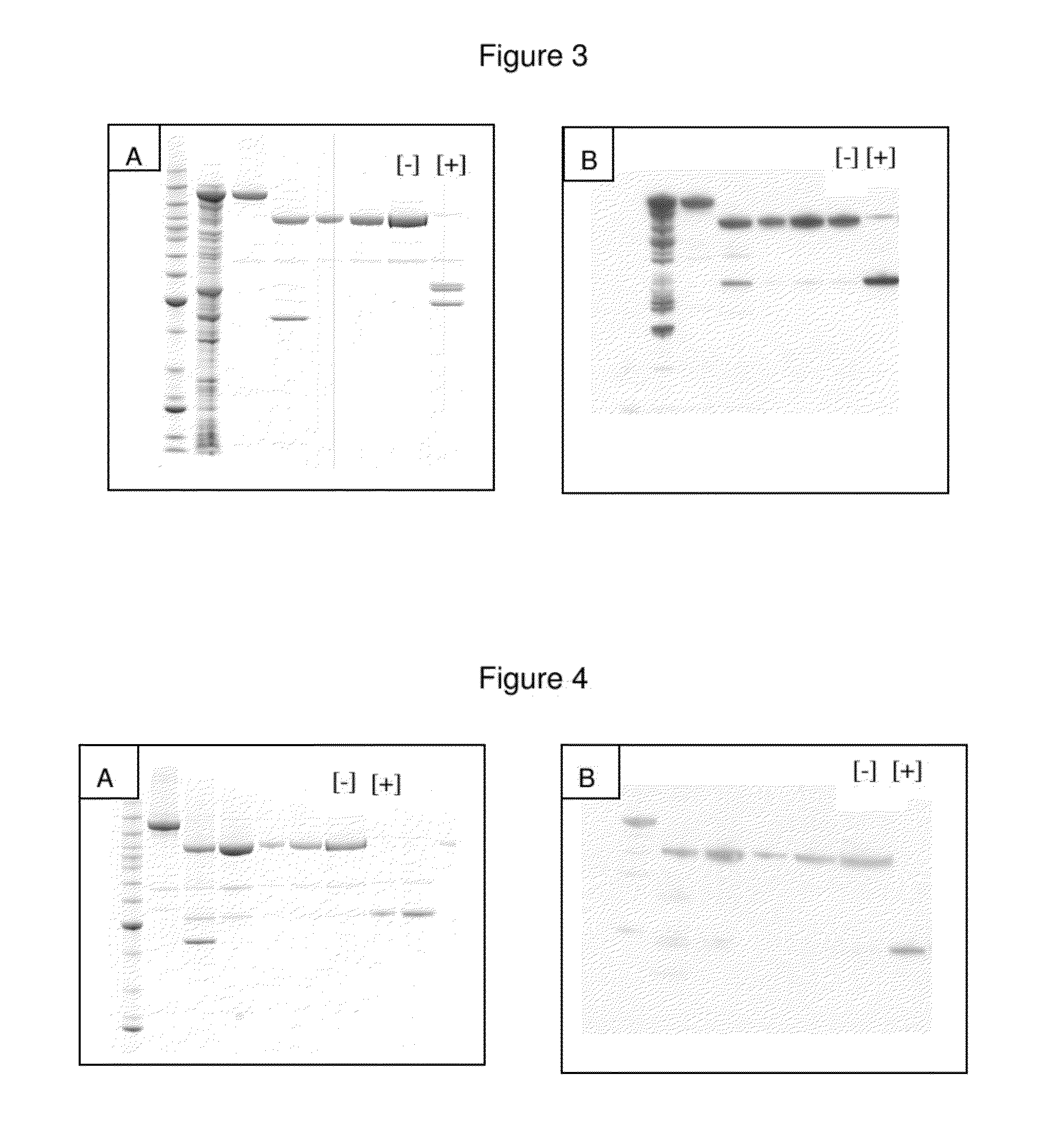Non-cytotoxic protein conjugates
a non-cytotoxic, conjugate technology, applied in the direction of polypeptides with his-tags, drug compositions, peptides, etc., can solve the problem of binding affinity of pain-sensing target cells
- Summary
- Abstract
- Description
- Claims
- Application Information
AI Technical Summary
Benefits of technology
Problems solved by technology
Method used
Image
Examples
example 1
Confirmation of TM Agonist Activity by Measuring Release of Substance P from Neuronal Cell Cultures
Materials
[0606]Substance P EIA is obtained from R&D Systems, UK.
Methods
[0607]Primary neuronal cultures of eDRG are established as described previously (Duggan et al., 2002). Substance P release from the cultures is assessed by EIA, essentially as described previously (Duggan et al., 2002). The TM of interest is added to the neuronal cultures (established for at least 2 weeks prior to treatment); control cultures are performed in parallel by addition of vehicle in place of TM. Stimulated (100 mM KCl) and basal release, together with total cell lysate content, of substance P are obtained for both control and TM treated cultures. Substance P immunoreactivity is measured using to Substance P Enzyme Immunoassay Kits (Cayman Chemical Company, USA or R&D Systems, UK) according to manufacturers' instructions.
[0608]The amount of Substance P released by the neuronal cells in the presence of the ...
example 2
Expression and Purification of Catalytically Active LHN / A
Materials
[0609]Synthetic DNA obtained from Sigma Genosys.
[0610]Restriction enzymes obtained from New England Biolabs.
Methods
[0611]The expression and purification of catalytically active LHN / A was carried out essentially as described in Sutton et al., (2005), Prot. Express. Purif., 40, pp 31-41.
[0612]Briefly, DNA encoding the light chain plus 423 amino acids from the N-terminal of the heavy chain of BoNT / A was synthesised by Sigma-Genosys to produce a synthetic LHN / A gene with an E. coli codon bias. The linker region between the light chain and HN domain was engineered to contain a Factor Xa cleavage site by splice-overlap extension PCR. Two PCR products were generated using primer pairs consisting of a long, mutagenic primer and a shorter, non-mutagenic primer:
[0613]
(5′-tccaaaactaaatctctgATAGAAGGTAGAaacaaagcgctgaacgac; SEQ ID NO: 176)with(5′-CTTGATGTACTCTGTGAACGTGCTC; SEQ ID NO: 177);and(5′-gtcgttcagcgctttgttTCTACCTTCTATcagaga...
example 3
Expression and Purification of Catalytically Active Recombinant LHN / B
[0617]The methodology described below will purify catalytically active LHN / B protease from E. coli transformed with the appropriate plasmid encoding the LHN / B polypeptide. It should be noted that various sequences of suitable LHN / B polypeptides have been described in PCT / GB97 / 02273, granted U.S. Pat. No. 6,461,617 and U.S. patent application Ser. No. 10 / 241,596, incorporated herein by reference.
Methods
[0618]The coding region for LHN / B is inserted in-frame to the 3′ of the gene encoding maltose binding protein (MBP) in the expression vector pMAL (New England Biolabs) to create pMAL-c2x-LHN / B. In this construct, the expressed MBP and LHN / B polypeptides are separated by a Factor Xa cleavage site, and the LC and HN domains are separated by a peptide that is susceptible to cleavage with enterokinase. The expression clone is termed pMAL-c2X-synLHN / B.
[0619]pMAL-c2X-synLHN / B is transformed into E. coli HMS174 and cultured ...
PUM
 Login to View More
Login to View More Abstract
Description
Claims
Application Information
 Login to View More
Login to View More - R&D
- Intellectual Property
- Life Sciences
- Materials
- Tech Scout
- Unparalleled Data Quality
- Higher Quality Content
- 60% Fewer Hallucinations
Browse by: Latest US Patents, China's latest patents, Technical Efficacy Thesaurus, Application Domain, Technology Topic, Popular Technical Reports.
© 2025 PatSnap. All rights reserved.Legal|Privacy policy|Modern Slavery Act Transparency Statement|Sitemap|About US| Contact US: help@patsnap.com



